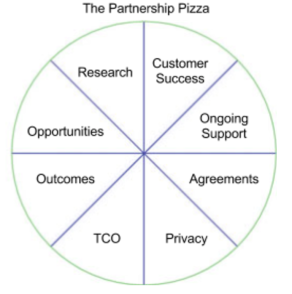 How might we cultivate, spread and scale a culture of innovation throughout our classrooms and schools to catalyze people for positive change? This is the powerful question that we’re exploring in my school district, Richland School District Two in Columbia, SC. Coming to a common understanding about what a culture of innovation means has been essential in the development of our vision. An innovative school culture fosters community, encourages new ideas to solve complex issues and is the foundation for successful schools and ultimately for successful students. It’s easy to talk about creating a culture of innovation, but it’s harder to implement. And if trust in the culture is broken, it’s much harder to rebuild.
How might we cultivate, spread and scale a culture of innovation throughout our classrooms and schools to catalyze people for positive change? This is the powerful question that we’re exploring in my school district, Richland School District Two in Columbia, SC. Coming to a common understanding about what a culture of innovation means has been essential in the development of our vision. An innovative school culture fosters community, encourages new ideas to solve complex issues and is the foundation for successful schools and ultimately for successful students. It’s easy to talk about creating a culture of innovation, but it’s harder to implement. And if trust in the culture is broken, it’s much harder to rebuild.
Many great resources are available to assist schools in reimagining culture and taking steps for a culture shift. Some of my favorite resources include the Johnson and Scholes Culture Web and *Gartner research on steps that lead to a culture of creativity. We can also learn from companies like Inteland Google and how they create a climate for curiosity, agency, risk taking, and collaboration. Based on my own experience and the research of others, here are six steps you can take this year to build a culture of innovation in your classroom and school.
Six Steps to Building a Culture of Innovation
- Change your perspective. Use design thinking techniques for observing and interviewing to get a sense of what is going on in your school or classroom. Observation gives you fuel for thought, but you need to follow up with interviews to find out more about what people are thinking and feeling. Shadow a student or colleague for a day to change your perspective and put yourself in someone else’s shoes. You can read more about this from my Intel Visionary friend and colleague Melissa Lim. In her post on the Intel IT Peer Network, Setting Goals for the New School Year, she talks about being a mindful listener and being aware of implicit biases.
- Activate others to use their talents. How we welcome our staff, learners and community sets the stage for how everyone engages in the school culture. Little steps like sending hand written invites to an event, setting up a room for collaboration and incorporating mixer activities can make a big difference in participation and engagement. In a typical meeting, 20% of the people take up 80% of the time. To create a culture of innovation, organize the structure of classes, workshops and design sessions so that 100% of the attendees are involved 100% of the time. Follow-up after events by sending out thank you notes and giving shout outs to participants. Remind people of next steps and provide ongoing support, check-ins, and road block removal.
- Create rituals and routines to foster innovation. Rituals are a way to bridge the gap between our desired beliefs and behaviors and the current state. They can be used to create a group identity, raise team spirit, put people in a mindset to think creatively, or encourage collaboration. Ideas that can easily be incorporated include using design thinking methods in team meetings, providing exercise or mindfulness breaks, and celebrating new students and staff members through recognition programs. Think about your desired results and then design rituals to achieve those results.
- Position yourself as a learner. It’s easy to get into a routine of doing work that we know instead of reaching out to learn new content, methods or skills. Time constraints and daily work make it challenging for us to take on new growth opportunities but we need to model learning to be successful in creating a positive school culture. Step outside of your comfort zone and try something new to rewire your brain. We need to unlearn old habits to make way for new ways of working. In the video, The Backwards Brain Bicycle, Destin Sandlin, explores how difficult it is for us to unlearn habits and biases. Keeping ourselves challenged and in flow will help to develop a culture where risking taking and learning from failure is valued. Encourage practices like 20% time to provide students and others in your organization with time to work on their passions.
- Build a network of trust and collaboration. Building an innovative community is achieved by creating opportunities for others to have discussions and collaboration. In The Power of Onlyness, Nilofer Merchant emphasizes that each person in a network brings their own unique contribution (onlyness) that becomes amplified by the onlyness of others. When people come together for a common cause, they can have a powerful influence on the naysayers. During a recent visit to Nashville, I was reminded of the power of networks while visiting RCA Studio B. This small room produced some of the most well known singers and musicians with over 1000 hits. By giving everyone a place to share their voice, we build trust which is an essential ingredient for a thriving, innovative community.
- Be a storyteller. To be successful with shifting to a culture of innovation, you need to share stories. Create opportunities for students and educators to share their ideas and tell their stories. Innovation events and activities promote collaboration and provide a way for people to share both their successes and their failures. As more stories are told, more people will be willing to try new approaches and share their experiences.
The next steps is to get started! Bring together a team, establish a common vision for a culture of innovation and brainstorm ideas that you can prototype and test. I look forward to hearing how these approaches work for you!
References and Suggested Reading:
- *Drive a Creative Culture Through Activities, Education and Attitude, Gartner Analysts Jackie Fenn and Mary Meaglio. June 10, 2016
- School Culture Rewired by Steve Gruenert and Todd Whitaker
- Braving the Wilderness by Brene Brown
- The Power of Onlyness by Nilofer Merchant


